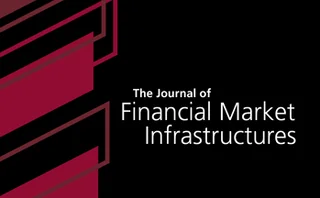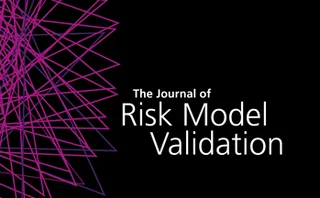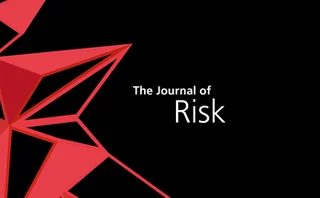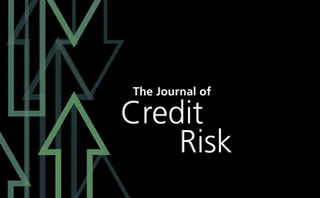Technical paper/Stress-testing
We will shock you: a coherent Bayesian approach for stress testing
The authors propose a novel coherent Bayesian stress test method which preserves the mathematical properties of the risk measures.

Bridging the gap risk reloaded: modelling wrong-way risk and leverage
Construction of hypothetical scenarios for central counterparty stress tests using vine copulas
Quantification of model risk with an application to probability of default estimation and stress testing for a large corporate portfolio
Correlations in operational risk stress testing: use and abuse
The paper presents an analysis of correlation effects of economic factors on the operational risk losses of a medium-large UK retail bank, and it recommends that causal factors that effect operational risk should be identified.
On comprehensive balance sheet stress testing and net interest income risk attribution
In this paper the authors propose a framework for granular-level stressed net interest income calculation and profit-and-loss risk attribution.
Climate risk and central counterparty risk management
In this paper, the European Association of CCP Clearing Houses discusses several aspects of climate risk, including how climate risk is currently integrated into central counterparty stress testing, the metrics within climate risk and how central…
A survey of machine learning in credit risk
This paper surveys the impressively broad range of machine learning methods and application areas for credit risk.
Comprehensive Capital Analysis and Review consistent yield curve stress testing: from Nelson–Siegel to machine learning
This paper develops different techniques for interpreting yield curve scenarios generated from the FRB’s annual CCAR review.
Modeling loss given default regressions
The authors investigate the puzzle in the literature that various parametric loss given default (LGD) statistical models perform similarly, by comparing their performance in a simulation framework.
Stress testing household debt
The authors estimate a county-level model of household delinquency and use it to conduct “stress tests” of household debt.
A FAVAR modeling approach to credit risk stress testing and its application to the Hong Kong banking industry
In this paper, a credit risk stress testing model based on the factor-augmented vector autoregressive (FAVAR) approach is proposed to project credit risk loss under stressed scenarios.
Hypothetical yield curve scenarios for credit stress testing
In this paper, we discuss a set of hypothetical yield curve shift scenarios generated by applying extreme value distributions and a shaping procedure. These statistically derived hypothetical stress scenarios could be susceptible to model risk, leading…
Benchmarking operational risk stress testing models
This paper outlines several approaches to benchmarking operational loss projections under stressed scenarios using both accounting metrics and historical loss experience.
Measuring economic cycles in data
This paper determines if enough data is available for forecasting or stress testing, a better measure of data length is required.
Supervisory stress testing for central counterparties: a macroprudential, two-tier approach
This paper examines the role of supervisory stress testing of central counterparties (CCPs). A key message is that the design of supervisory stress tests (SSTs) should be tailored to CCPs’ roles, risk profiles and financial structures.
A triptych approach for reverse stress testing of complex portfolios
Pascal Traccucci et al present an extended reverse stress test triptych approach with three variables
Credit portfolio stress testing using transition matrixes
In this paper, the authors propose a new methodology for modeling credit transition probability matrixes (TPMs) using macroeconomic factors.
A generic stress testing framework with related economic shocks and possible regulatory intervention
In this paper, the authors develop and demonstrate a universal framework for supervisory stress tests of financial institutions that considers the probable dependencies among macroeconomic shocks and possible regulatory intervention.
Central counterparty CVA
Matthias Arnsdorf proposes a method to calculate the counterparty risk related to CCP membership
Quantification of model risk in stress testing and scenario analysis
In this paper, the author's aim is to empirically analyze the numerical quantification of model risk, yielding exact buffers in currency amounts (for a given model uncertainty).
Systemic risk in the financial system: capital shortfalls under Brexit, the US elections and the Italian referendum
This paper uses SRISK to quantify the estimated capital shortfalls of financial institutions under three relevant stress events that occurred in 2016: Brexit, the Trump election and the Italian referendum.
A new model for bank loan loss given default by leveraging time to recovery
In this paper, the author estimates a two-equation system: one for LGD that incorporates time to recovery as one of the model explanatory variables, and the other for time to recovery using survival models that address data censoring.







